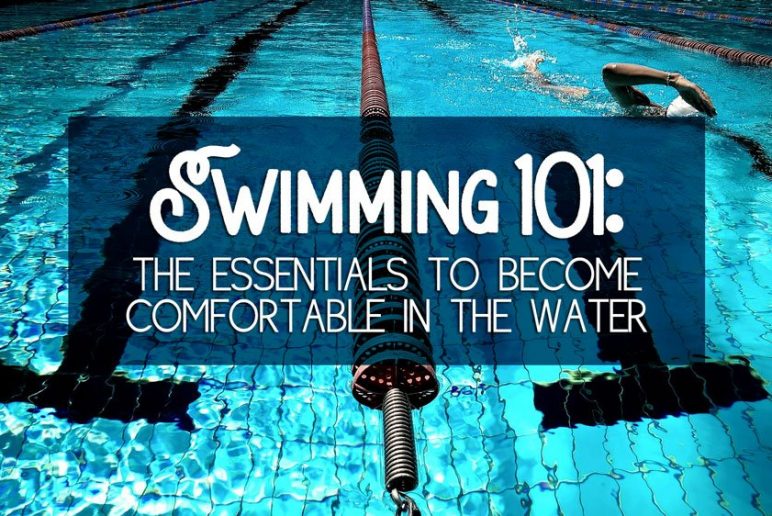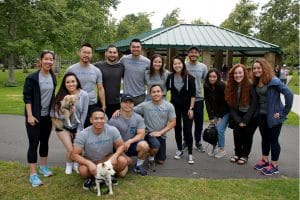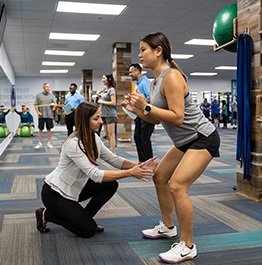
Swimming 101: The Essentials to Become Comfortable in the Water
February 23, 2016Have you ever considered competing in a triathlon but the swimming portion scared you out of signing up? You are not alone! Swimming is the one element of triathlons that turns away the most potential participants. Trust me, I was in that boat once too! I once had a friend describe my swim technique as “drowning over a distance”. No wonder I always felt so tired after swim workouts. However, I began to realize that focusing on correct technique, body position and stroke efficiency made a huge difference in my endurance and comfort in the water. Below are some quick tips to get you going in both recreational and triathlon swimming.
Basic Gear:
While there are many other swimming accessories and training tools for pool and ocean swimming, here are the essentials:
- Swimsuit – When you’re in the water, you want to be as streamlined as possible so more tight-fitting suits will perform better. The baggier your suit is, the more drag it will create in the water and the slower you will go!
- Goggles – These come in a variety of shapes and sizes: narrow lenses seal into the eye socket while wider lenses seal around the eye socket. When buying, fit them on your eyes without the strap around your head. If they seal properly, sticking for a few seconds, they are a good fit. Look for silicone sealing, as it will eventually mold to the shape of your face.
Swim Mechanics:
Body Position
Try to be as horizontal as possible in the water. The less your legs drag behind the body, the faster you can go.
Head Down
Most swimmers keep their head too high in the water, which slows them down and makes them work much harder than necessary (see image below). Practice pushing your head down in the water while lifting your tail towards the surface of the water. While it might feel odd at first, you’ll notice that you’ll move more efficiently.
Be Ambidextrous
Practice breathing to both sides. I know this is easier said than done, but if you’re just starting out, you don’t have any bad habits yet! Learning this skill now will make your life much easier down the road.
Basic How-To: Front Crawl
- Entry – When your front arm enters the water beyond the head, and extends out to create momentum. Pierce (don’t plow) through the water at between 45-60 degrees from the surface, and try to elongate your arm as if you are lying on a car hood and are reaching down towards the bumper.
- Catch – Hand starts to bend slightly in the water at the top of the stroke to create a pulling power.
- Pull – As your elbow starts to bend, think about pulling your hand to your pocket. During this pull, initiate your core muscles to help rotate your torso through the water. As you are rotating, push your shoulder down into the water to lift the opposite hip towards the water’s surface. This will decrease your drag and allow you to better “glide” through the water. NOTE: Turn your head to the side and “sip” a breath if needed, before blowing out while under the water
- Stroke Finish – Hand and arm push back under the water and straightens before leaving the water for recovery
- Recovery – Hand exits the water. Swing your elbow with a relaxed forearm and hand and your fingertips just over the water until you re-initiate “Entry” step
Swim drills:
- Bilateral Blowout – Breathe only every third stroke on alternate sides. This will encourage more balanced swimming, and build lung strength.
- Streamline Glide – Practice your entry position as you hang your head, reach forward at 45-60 degrees (reach for the bumper), lift your tail, and allow your torso to float on top of the water as your legs propel you. Try to reach the other end of the pool in as few glides as possible, while maintaining good form.
- Sweet Spot – Lie on your back and gently kick your legs. Slowly rotate your body from side to side while keeping your face and mouth out of the water. Use your core muscles to maintain balance while keeping your head in line with your spine. Once this becomes easy, flip over and complete the same task face down in the water. Not only does this improve your core stability, but will help you stay more balanced in the “Pull” phase
- Long and Slow – Do at least one session per week of long-distance, slow swimming. This will help build your aerobic capacity and perfect your technique.
- Sight Breathing – If you plan on swimming in open water (i.e. ocean or river), practice “sight breathing”. Lift your head, not shoulders, briefly out of the water to see where you’re going in a race while breathing at the same time. Do this every 4-5 strokes instead of following the black lane line for guidance. This will keep you from getting disoriented in open water swims.
#1
| Warm Up | 100m crawl (4 lengths) |
| Main Set | 5 x 50m (2 lengths) |
| Endurance | Swim continuously for 5 minutes at easy pace |
| Cool Down | 300m crawl (12 lengths) |
#2
| Warm Up | 300m crawl (12 lengths) including drills |
| Main Set | 3 x 100m (4 lengths) with full recovery |
| Endurance | 500m crawl (20 lengths) |
| Cool Down | 200m crawl (8 lengths) – easy pace |
Other Tips
- Swimming alone can be a drag (pun intended), so try to find a masters swimming squad near your area who can cater to a wide range of skill levels. There are a ton in Orange County – http://www.usms.org
- Once you become more skilled as a swimmer, join up with a specialized swimming squad and coach to perfect your technique
Just Keep Swimming!
These tips will give you a great start in beginning your journey in the pool and ocean, but don’t get discouraged if these skills take some time to improve. It took me months before I was comfortable in the pool, and even longer to feel calm in the ocean! If you want more personalized training for your swimming, I highly encourage you to look into Total Immersion (http://www.totalimmersion.net. They offer a very effective and easy to learn techniques, and they offer weekend workshops, individualized coaching, DVDs and books. I took a weekend workshop and it completely changed my efficiency in the water.
Go dive in and just keep swimming!
Swim injury? Sign up for a FREE Assessment:
Reader Interactions
Leave a comment
You must be logged in to post a comment.





